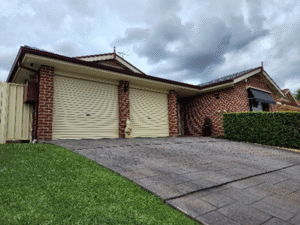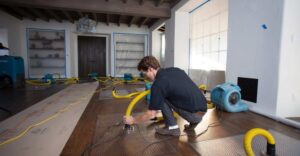
PC-rdfplumbing
A dripping shower head might seem like a small issue, but over time it can waste thousands of litres of water and lead to increased water bills or even cause damage to your bathroom. If you’re wondering, “Why is my shower head leaking?”, you’re not alone, it’s one of the most common plumbing issues Rockingham homeowners face.
While some shower head leaks can be resolved with a quick fix, others can cause more serious plumbing problems that need professional attention. In this blog, we’ll take you through how to fix a dripping shower head, offer a step-by-step approach, and help you decide when it’s time to call your local plumber.
Why Is My Shower Head Leaking?
Leaking shower heads are usually the result of one or more of the following issues:
1. Worn or Damaged Washers
Rubber washers inside your shower head or tap can deteriorate over time. When they no longer form a proper seal, water continues to drip after the tap is turned off.
2. Mineral Buildup
In many Western Australian homes, hard water causes limescale to accumulate inside shower heads. This buildup can redirect water flow and damage internal components.
3. Loose or Cross-Threaded Fittings
If your shower head has been installed without Teflon tape or tightened incorrectly, it may be leaking from the threads where it connects to the pipe.
4. Faulty Tap or Valve Cartridge
If water still drips after you’ve turned off the shower tap, the issue could be inside the wall, specifically with the cartridge or mixer valve that controls water flow.
Tools Required for Fixing Leaky Showerhead
Before you begin, collect these following tool:
- Adjustable wrench or pliers
- Cloth or rag (to protect fittings)
- White vinegar
- Old toothbrush
- Teflon (plumber’s) tape
- Replacement washer or O-ring
- Replacement cartridge (if needed)
How to Fix a Leaking Shower Head: Step-by-Step Guide
Step 1: Identify the Area From Where the Leak Is Coming
- Leaking after the water is turned off? Likely a valve or cartridge issue.
- Leaking during use or spraying irregularly? Probably the shower head or connector itself.
Step 2: Turn Off the Water
For basic shower head repairs, turning off the shower tap is usually enough. If you’re dealing with a cartridge issue, shut off your home’s main water supply to avoid flooding.
Step 3: Remove the Shower Head
Wrap a cloth around the connector to protect it, then use pliers or a spanner to unscrew the shower head from the arm. Take extra precaution as you may damage the threads.
Step 4: Soak & Clean
Soak the shower head in a bowl of white vinegar for 30 minutes to dissolve any mineral buildup. Use a toothbrush to scrub away debris. This step alone can improve water flow and stop minor leaks.
Step 5: Inspect the Washer and O-Ring
Check the shower head for the rubber washer or O-ring. If it’s cracked, worn, or missing, replace it with a matching one from your local hardware store.
Step 6: Re-Tape the Threads
Wrap plumber’s tape clockwise around the shower arm threads. This helps create a watertight seal and prevents future leaks at the connection point.
Step 7: Reinstall and Test
Screw the shower head back on, hand-tighten, and then finish with the wrench. Turn the water on and check for any signs of dripping.
What If the Leak Continues?
If your shower still leaks even after cleaning and replacing the washer, the issue might lie behind the wall.
Common Signs of a Faulty Cartridge or Valve:
- Constant dripping even after the tap is turned off
- Difficulty turning the tap fully off
- Uneven water pressure or temperature fluctuations
In this case, you’ll need to:
- Remove the tap handle and cover plate
- Extract the cartridge (you may need a special tool or puller)
- Replace it with a compatible new part
If you’re unsure about disassembling plumbing fixtures or can’t access the valve easily, it’s best to call a licensed plumber.
Why Call a Professional Plumber?
While minor shower head leaks are manageable, not every plumbing issue is. Somewhere issues require expert assistance. That’s where a qualified plumber comes in.
Here’s when to call in the pros:
- The leak is coming from behind the wall or requires proper inspection.
- You’re unable to remove or replace the cartridge
- There’s mould, water damage, or a musty smell in your bathroom
- You’ve tried DIY fixes and the leak is still there.
A professional plumber can quickly identify the root cause and fix the issue properly, saving you time, money, and stress.
Prevent Future Shower Head Leaks
To reduce your risk of future leaks:
- Clean your shower head at regular intervals
- Replace washers or O-rings every few years
- Avoid over-tightening fittings, which can damage threads
- Install a pressure regulator if you experience high water pressure
Regular maintenance is key to a healthy plumbing system and a leak-free bathroom.
Conclusion
Whether your shower head is slowly dripping or spraying water in unusual ways, taking the time to fix it now can save you from future expensive repairs. With the right tools and a bit of patience, you can often tackle the issue yourself.
But if the problem goes beyond a washer or a loose fitting, don’t hesitate to call your local plumbing expert. A licensed plumber can not only fix the leak but ensure your entire system is functioning at its best.Tired of constant dripping? Contact your local plumber today for fast, reliable plumbing services.





